Ideas Through Process
Allowing materials and processes to guide idea development
In my earlier post about Regaining Ownership, I talked about how I was looking for ways to give myself permission to take ownership of my creative processes, whilst acknowledging the structures around me, created by others. In this post I share how I have been exploring materials and processes organically, building trust in the journey.
I have been trying to take a step back from making ‘nice’ imagery – from playing safe with my subject matter and approach, and instead to let the materials guide my exploration. I’m immersing myself in techniques and processes, and I’ve been using my interests in cellular biology as a focus for that. The ‘ambiguity,’ (to an untrained eye) of microscopic cellular imagery has I think granted myself permission to work a bit more abstractly, which is something I’ve avoided in the past. It feels like I’m working with a subject matter (which is important to me, to provide inspiration and structure), but its restraints are loose enough that I can let the materials guide my outcome.
I’ve used additive monoprints (using oil paints) as a starting point. The process itself is unpredictable, and I’ve played with this unpredictability further by printing onto surfaces like fabric with different mesh sizes, and also tracing paper, discovering how these surfaces handle the ink, whether the image actually prints at all, and then how the surface creates patterns in the left-over ink on the matrix. I’ve found giving myself time to really look at the marks made through the processes useful for understanding how my ideas might be represented.
I love the impression left in damp paper after printing with a layer of muslin between the paper and the matrix. Looking at it closely, the small, regular, hills and valleys left as a negative of the muslin feel like aligned cells, and I’d like to find a way to focus on this more. I’ve since explored recreating this impression, through a morning of trial and error, changing different aspects of the printing process.
When I collected the tests at the end of the day, it felt like I hadn’t much to show for my time. Each sheet was apparently blank, until closer inspection. I quite like this aspect of them though. It reminds me of looking at cells through a microscope (the cells appear invisible, until time is taken to look at them in a particular way). Similarly, the samples of paper are unassuming, until the viewer takes a moment to look at them intimately, to examine them.
Alongside this process-based exploration I have been painting still lifes, and I’ve found that the objects I’m becoming most attracted to are bags (thin paper and plastic bags) and pieces of thin, functional fabric. Initially, I think it was an aesthetic choice – painting the planes and creases in a bag provides a lot of space to break down the object into tiles of colour. More recently though, I’ve realised it is also the membranous nature of a bag, and its ability to contain, which feels aligned with the properties of cells.
I’m playing with the translucency of the surfaces I use – painting on tracing paper, leaving areas intentionally unpainted, where the understood value of that area changes depending on the surroundings and lighting, and painting on muslin, where almost all of the image is obliterated when held up against the light. The delicacy of a translucent surface seems to me to be a useful bridge between something that is tangibly understood in a mundane, biographical environment, and the fluidity of a plasma membrane.
I wanted to work with the translucency of the tracing paper so began painting still lifes of bags and pieces of crumpled fabric, directly against the window. The backlit paper forced me to change the way I was thinking about applying the paint. Suddenly adding a thick white highlight becomes the darkest part of the painting, so instead for lighter values I had to use thinner/more translucent paint, while the shadows were worked with thicker, opaque acrylic. It was quite freeing to be focussing my attention on a new way of working, and the lighting drew my attention to a few new aesthetic accidents that ordinarily wouldn’t have been as noticeable; drips of paint that buckled the paper and collected in a bead at the bottom created exaggerated marks, where the paint gathered in each buckle, creating ripples of dark and light.
Removing the paintings from the window and looking at them under ordinary lighting conditions was exciting. They became almost single value paintings, in colours I hadn’t quite realised. I like the transient nature of them, and to me they feel like they exist in a space between cellular biology, and recognisable objects.
These pieces are shared at an exploratory stage, and I’m excited to see where next.


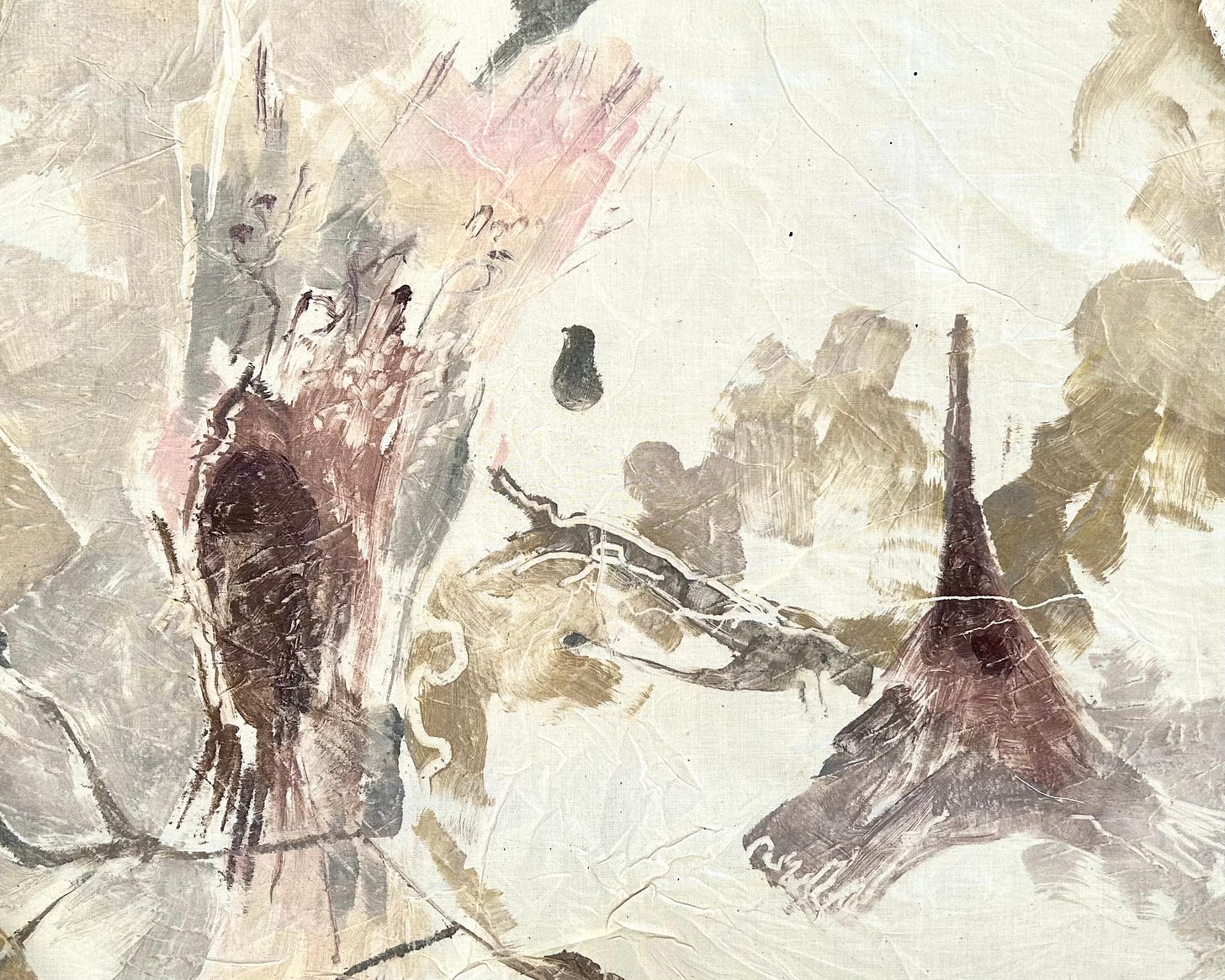
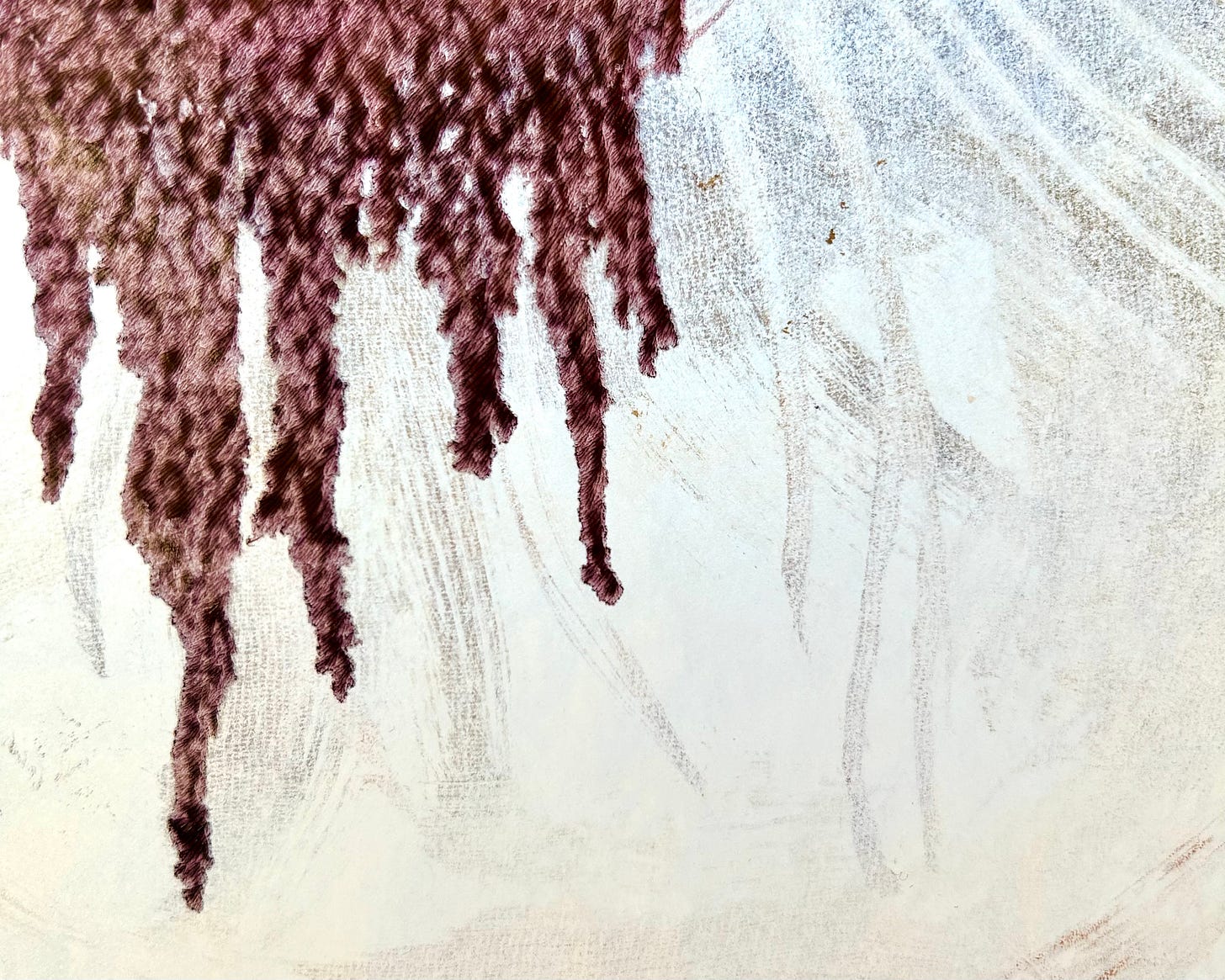
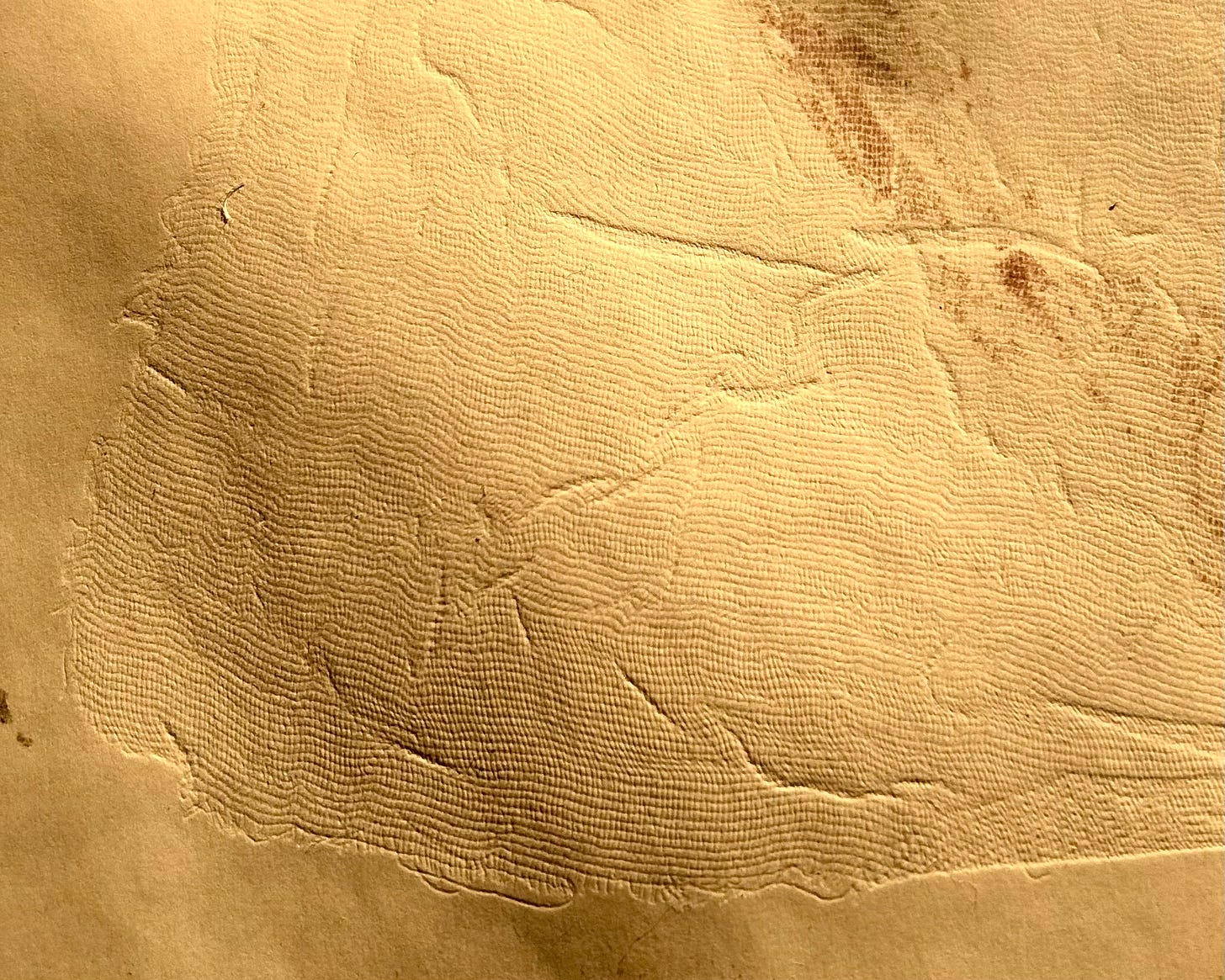
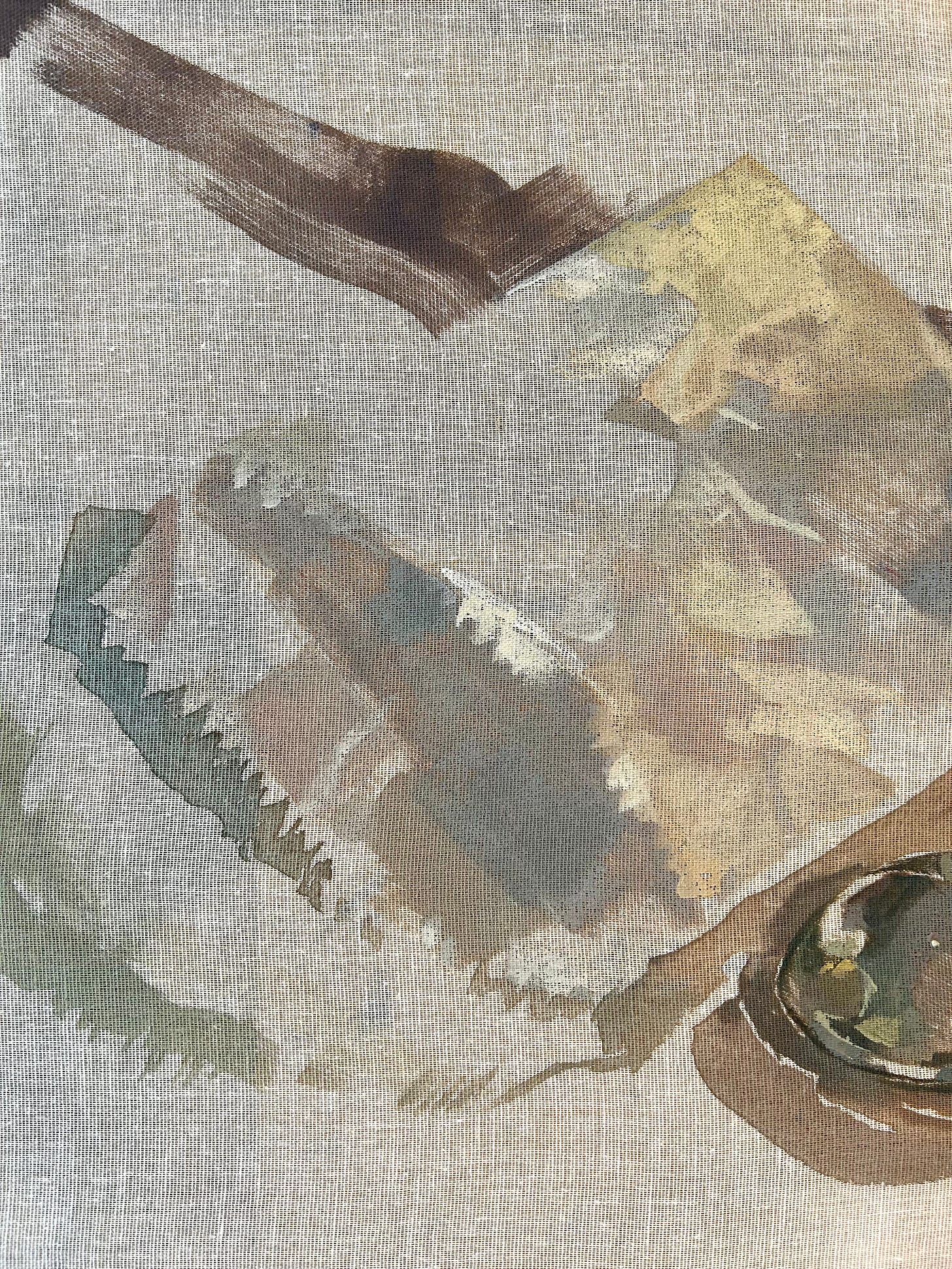
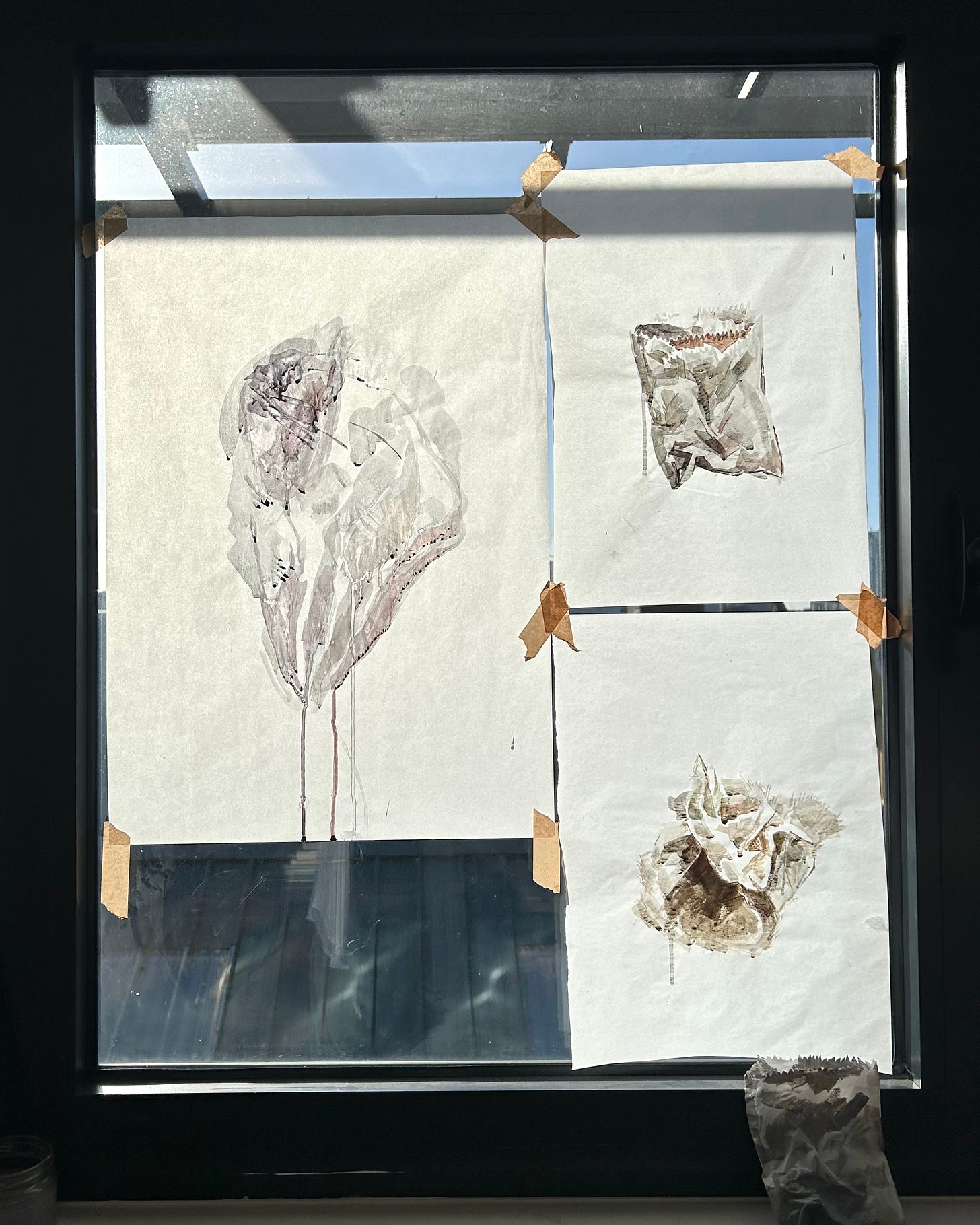
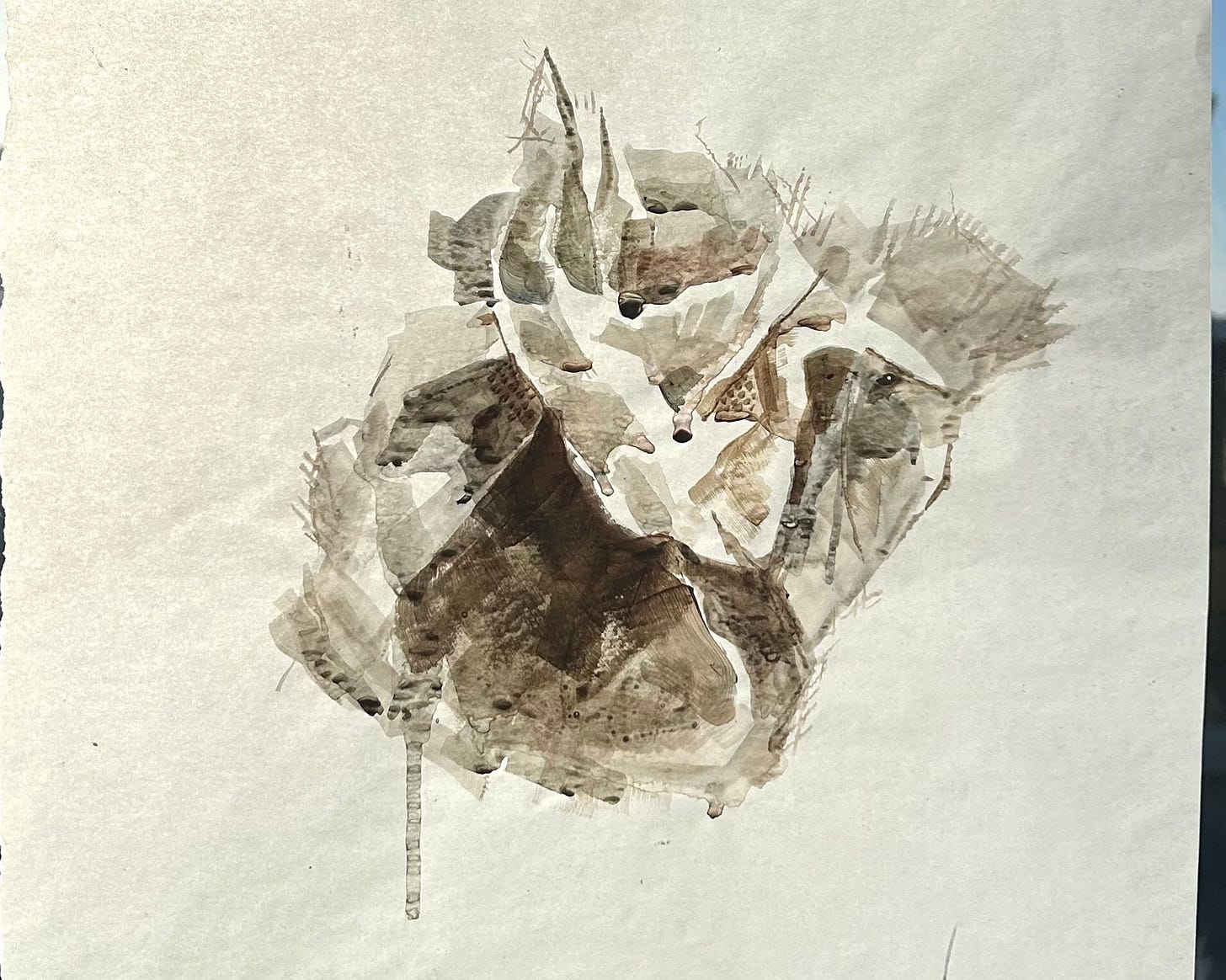
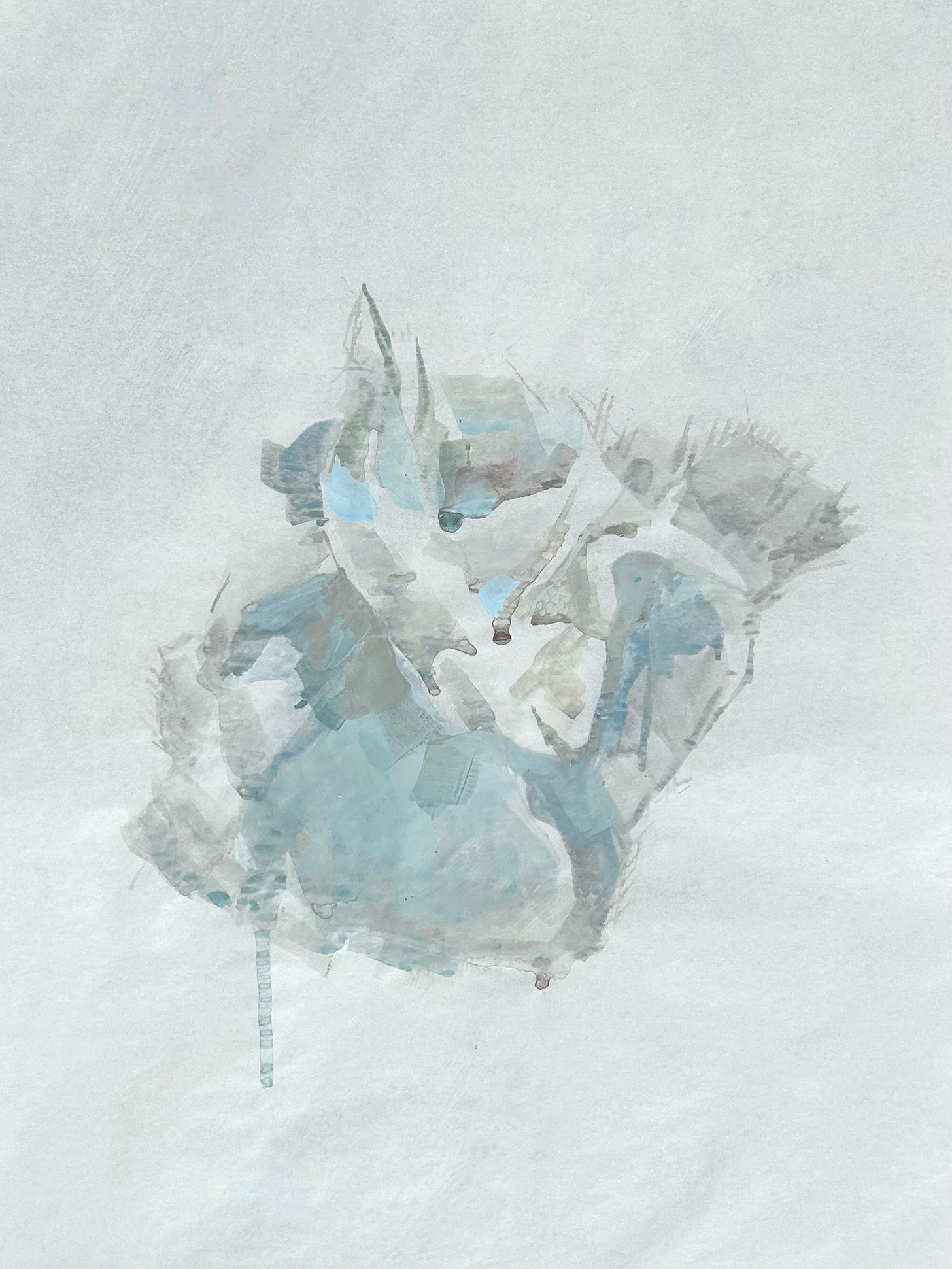
Fascinating to read about your exploration in progress, thank-you.